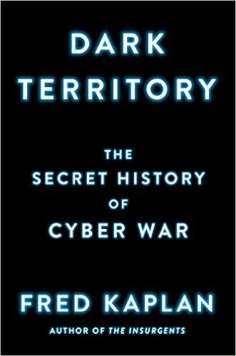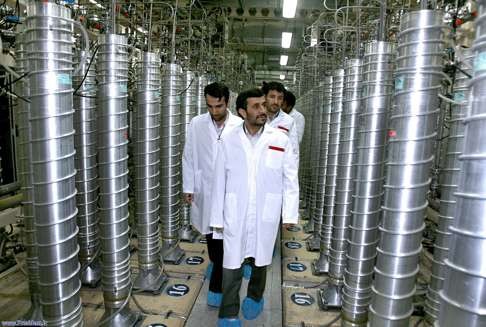
Book review - Dark Territory: The Secret History of Cyber War shows US a victim of its own hacks
It’s a case of what goes around comes around as the US becomes vulnerable to its own brand of cyber justice, writes Frank Kaplan


Dark Territory: The Secret History of Cyber War
by Fred Kaplan
Simon & Schuster
4 stars
Everyone’s heard Americans complaining, from the White House on down, about the cyberattacks on their country. But, you guessed it: they started it.
That’s one of the central thrusts of Fred Kaplan’s Dark Territory: The Secret History of Cyber War. Because it pioneered computing, the US intelligence agencies enjoyed decades of dominance over rivals, and even learned how to remotely wreak havoc on, say, the Iranian nuclear programme. But because nearly everything in our country is networked, it’s uniquely vulnerable now that the rest of the world has caught up.
“If America, or US Cyber Command, wanted to wage cyber war,” Kaplan writes, “it would do so from inside a glass house.”
Echoes of breaking glass were heard when federal prosecutors indicted five members of the Chinese People’s Liberation Army Unit 61398 for stealing secrets from Alcoa, US Steel and Westinghouse Electric. Also when North Korea, presumably, hacked and humiliated Sony. And did you know that Iran remotely ruined 20,000 computers owned by Las Vegas Sands?
The line between old-school espionage and cyber sabotage has blurred gradually over the past quarter century, Kaplan tells us, starting with 1991’s Operation Desert Storm, in which American intelligence hacked into Iraq’s air defence system.
Six years later, the Pentagon’s J-39 unit was able to remotely switch off Serbia’s government-controlled TV stations at key moments, hack Slobodan Milosevic’s radar systems and relentlessly prank call his top aides.
And during the past decade, emails were sent to Iraqi insurgents that seemed to be from trusted friends, much like the phishing messages we delete every day. But whereas our fake friends who are stranded in the Philippines just want our money, these e-mails to the jihadis told them to rendezvous with each other – and when they did, the US killed them.

By 1998, though, hackers were penetrating the network at Andrews Air Force Base. Those intrusions were traced to high school students in California. But later analysis of other cyber espionage attacks showed that the malicious code was initially typed on Cyrillic keyboards, suggesting that Russia was in the game.
That’s when, according to Dark Territory, the National Security Agency came to the conclusion that the best defence was a good offence. When Michael Hayden led the NSA from 1999 to 2005, its guiding philosophy, according to Kaplan, was that “the best way to defend a network was to learn an adversary’s plans for attack – which required getting inside his network”.
The ultimate intrusion was the well-reported Operation Olympic Games, in which the US planted a 650,000-line hunk of malware, later dubbed Stuxnet, into the computers controlling the Iranian nuclear reactor at Natanz. The clever code shattered thousands of centrifuges and added years of headaches to the Iranian bid for weapons-grade uranium.

As the first cyber operation to disrupt real-world infrastructure, Olympic Games was the information-age equivalent of the Hiroshima bombing, Kaplan argues.
The Iranians have hacked American interests in Saudi Arabia. The North Koreans have launched denial-of-service attacks against South Korea and Wall Street. The Russians shut down the online infrastructure of West-leaning Estonia and Georgia. The Chinese, apparently, snatched the personal information of 21.5 million Americans who have applied for security clearances.
Have you noticed that our protests sounded a little hollow?
Kaplan, a Slate columnist and veteran of The Boston Globe, is deeply sourced. Luckily, he’s not slavishly loyal to his sources: he deals dispassionately with the struggle, before and after Edward Snowden, to balance anti-terror measures and personal privacy.
The fun stuff? Details of meetings between top intelligence officials and hackers with nicknames such as Mudge and Space Rogue. The dull stuff? Play-by-play accounts of federal task forces. The lesson? “Anything we’re doing to them,” writes Kaplan, “they can do to us.”
Tribune News Service